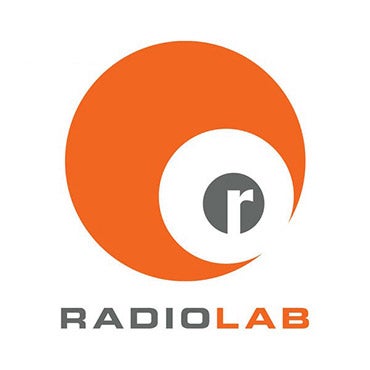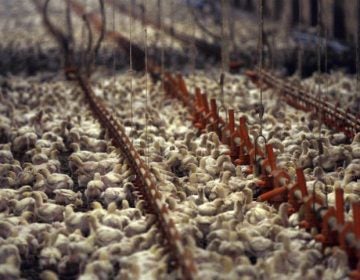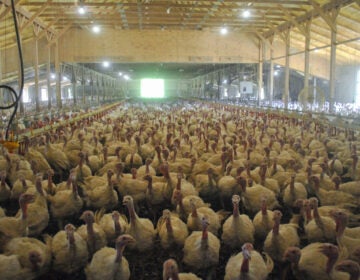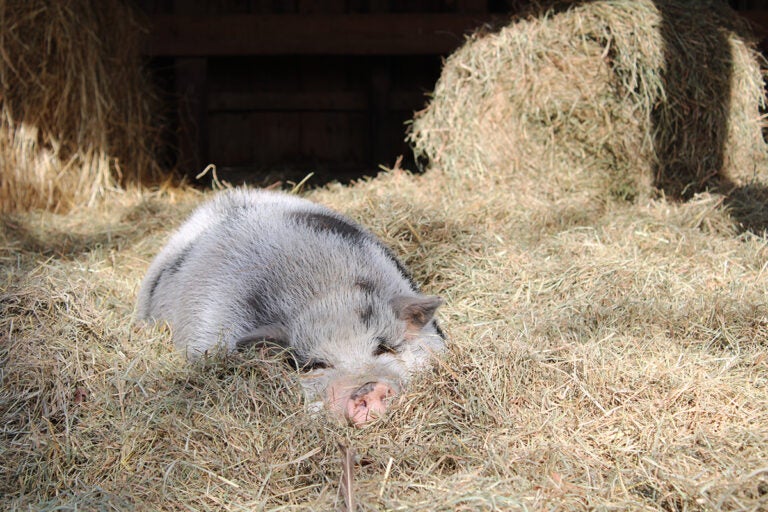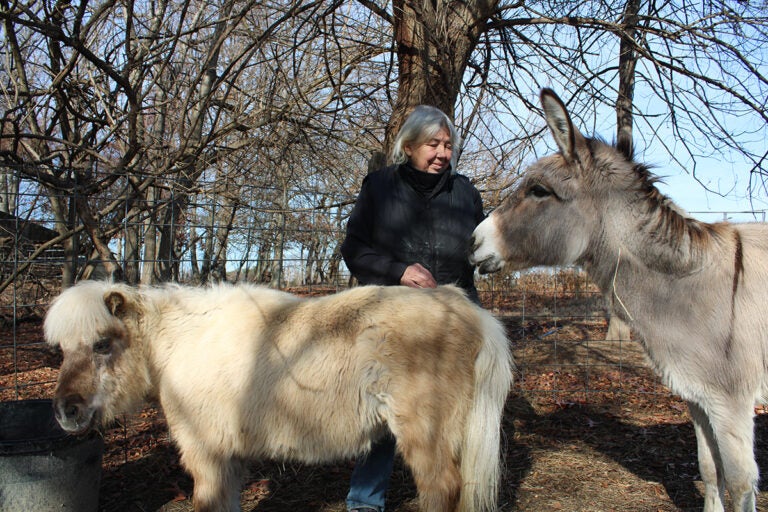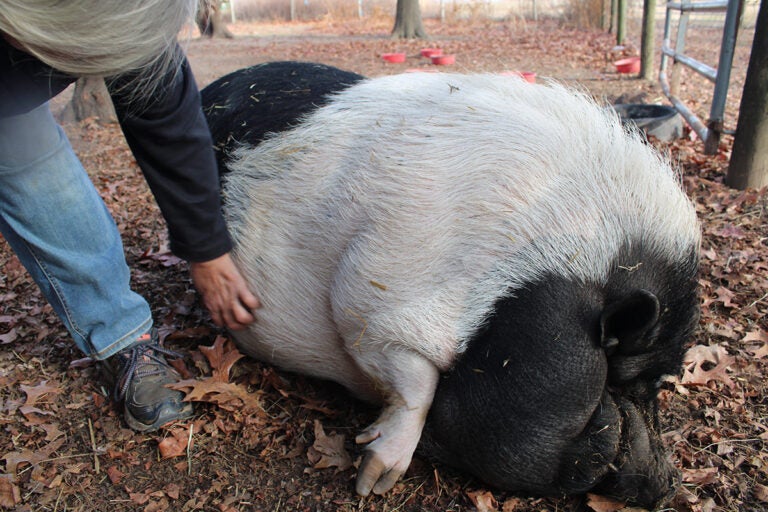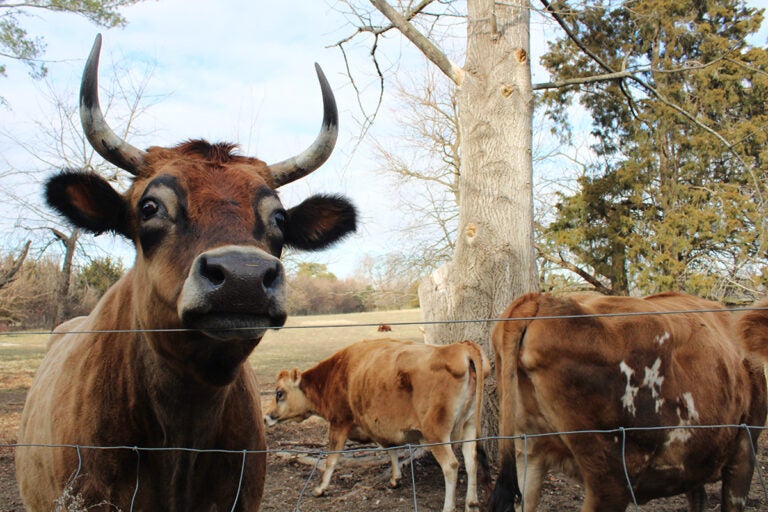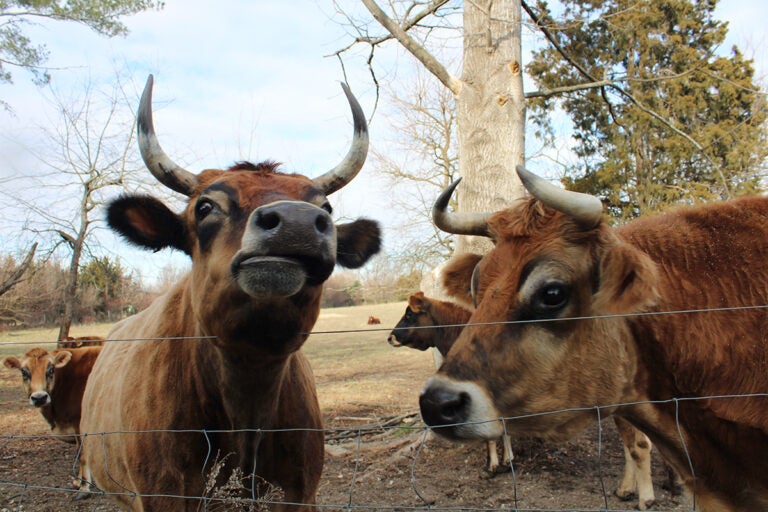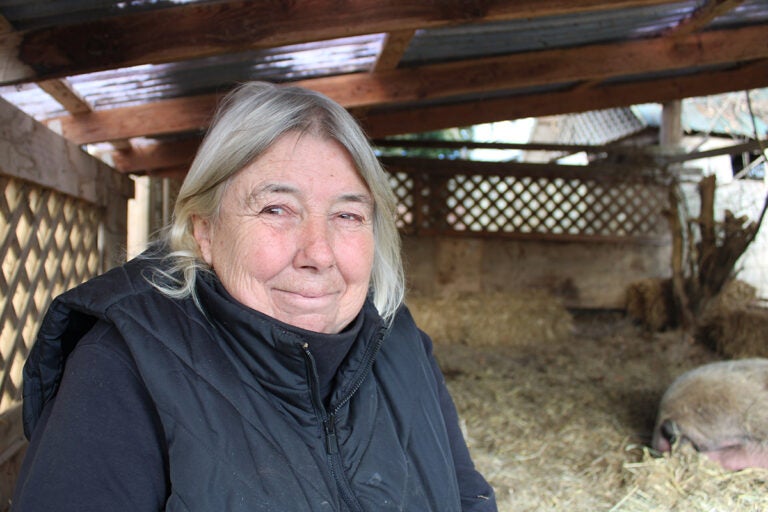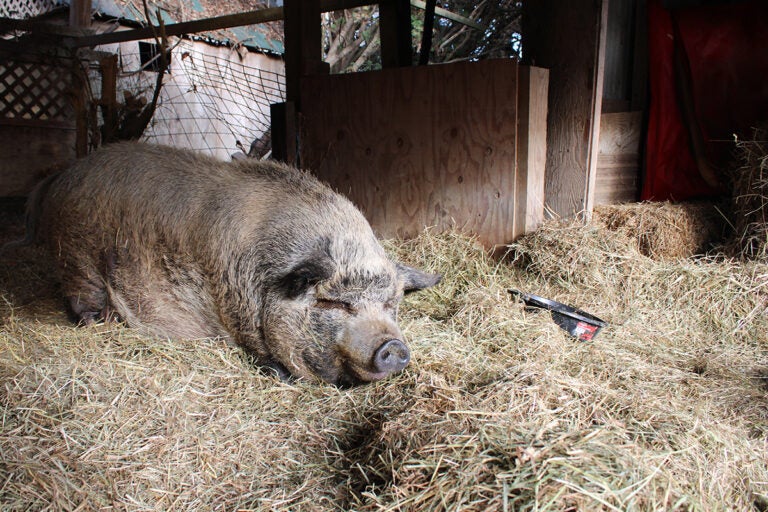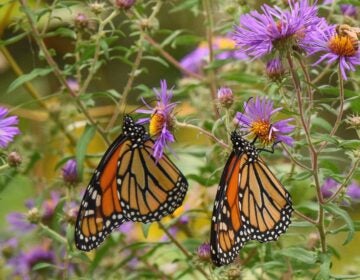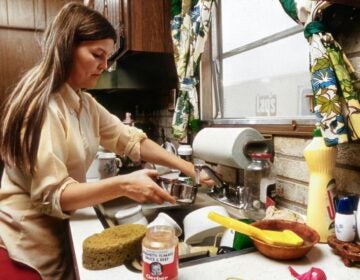Sanctuary for all: Cows, pigs, sheep — even emus find refuge at The Cow Sanctuary in New Jersey
Helga Tacreiter has cared for and nurtured hundreds of animals over the past three decades at the 80-acre sanctuary in Bridgeton.
Listen 1:11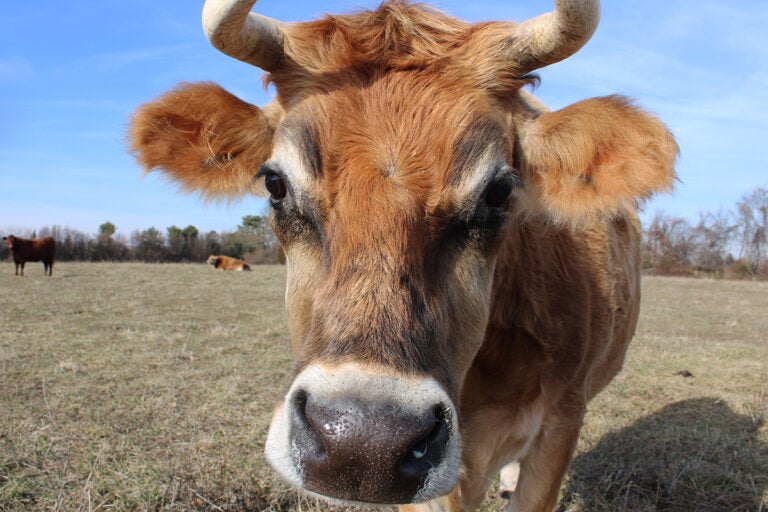
Bernie came to the sanctuary via a convent in upstate New York. (Emily Neil/WHYY)
From Philly and the Pa. suburbs to South Jersey and Delaware, what would you like WHYY News to cover? Let us know!
It was an apocalyptic scene that greeted Helga Tacreiter one morning in 1988 when she came out to feed the cows.
Strewn across the field were dead cows on their backs, legs in the air. Lightning had struck a tree nearby during a strong spring storm the night before. The bolt traveled along the ground, killing most of the herd.
It wasn’t the first time that Tacreiter, who was then a minimum wage farm worker, had to face the death of a beloved animal. When she first started working at a dairy farm in southern New Jersey in 1975, she befriended one of the cows she milked every day. The cows in that farm had numbers instead of names. This one was number nine. “Nine” was feisty, and teased Tacreiter by pulling out the various cords used to milk her.
But when the cow was no longer able to get pregnant, Nine had to be sent to the slaughterhouse.
“I just had to kiss her goodbye. And so that was the first cow that I fell in love with,” Tacreiter said. “And I thought, well, there’s nothing I can do. I mean, there’s 100 cows here, and each one of them is one day not going to get pregnant.”
But her acceptance of the cows’ fate changed that fateful day in the field, Tacreiter said, when she noticed six small calves huddled near the devastating scene. Upright and alive, they were still trying to nurse from their dead mothers.
“I took those six calves. And I said, ‘If lightning didn’t kill them, man is not going to kill them either,’” she said.
And so The Cow Sanctuary in Bridgeton, New Jersey, was born.
Building a home
At the time, Tacreiter was making $5 an hour working on a farm. After three years, she had scraped and saved up the thousands of dollars needed to buy the calves from the owner.
Following a temporary stay in an empty tomato packing house, Tacreiter looked for a permanent place for her herd. A woman who owned the farmland where the sanctuary now stands decided to sell it to Tacreiter in 1993. The owner accepted a second mortgage from the bank in place of a down payment, over the objections of her family.
“She wasn’t a vegetarian or anything,” Tacreiter said. “She just thought [that] … I was pretty heartfelt about it.”
It was just the first of what Tacreiter described as a series of “miracles,” which enabled the sanctuary to come to life.
The “second miracle” came after the end of a romantic relationship endangered the mortgage. A kind couple who wanted to save a cow for their children ended up stepping in and cosigning Tacreiter’s mortgage when her ex-boyfriend departed.
“‘Our attorney told us we were out of our minds, but we don’t care,’” Tacreiter remembers them telling her over the phone. “‘We’re going to do it. Where would you like us to show up to sign?’”
Tacreiter then saved the couple’s cow and the rescue lived out the rest of her life at the sanctuary, visited occasionally by the couple and their young girls, who are now in college.
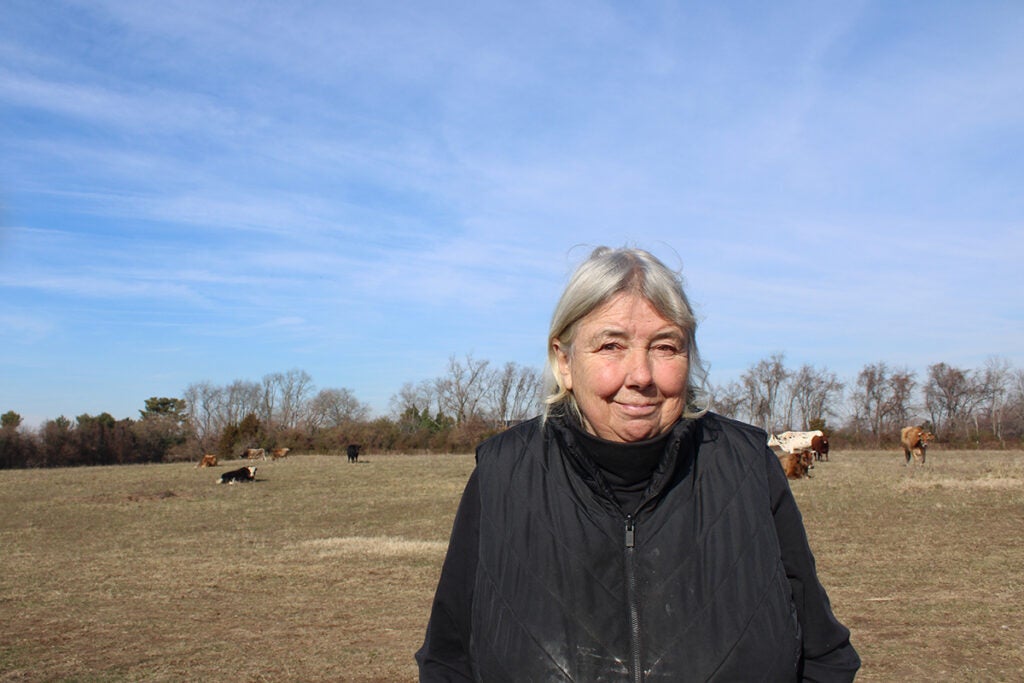
Cow paradise
By 1999, Tacreiter had achieved her dream: An 80-acre sanctuary where the miracle cows and future generations of animals could be cared for and nurtured until they passed away, naturally and peacefully. Over the three-plus decades, Tacreiter said around 158 cows have lived out their lives on the tranquil farm.
These days, the grounds of The Cow Sanctuary are home to 14 cows, 14 pigs, three sheep, 12 geese, four cats, three goats, two donkeys, one mini horse and one emu.
Tacreiter keeps the annual operating costs of the sanctuary to a lean $50,000. She doesn’t pay herself a salary, has no employees and receives some food donations for the animals, including fresh vegetables and produce from a nearby supermarket. For her own needs, she lives frugally, she said, and even shares her home with one of the animals: a pig named Tippy Tina.
The tale of the Cowches
In the early days of the sanctuary, Tacreiter raised money by creating and selling “Cowches,” a life-sized couch in the form of a cow. Harvey, one of the six miracle calves who were the first sanctuary residents, helped her create the “cowch” design one night, when she was starting to worry about finances.
“I bought a bolt of material, a fake fur material, at the local fabric store, and I took it to the barn,” Tacreiter recalled. “I just sat there and stared at it, and said, ‘Okay, well, I’ve got the great idea. I’ve got the material. Now, what do I do?’”
She looked up to realize Harvey was standing next to her. She said he didn’t take a treat, and he didn’t want to be petted.
“He just stood there next to me, and I said, ‘Is it possible that he’s offering to help?’” Tacreiter said.
For the next several hours, Harvey stood patiently as Tacreiter draped the fabric around his body, measuring and cutting, until she had the outlines of her first “cowch.” Tacreiter has made around 1,200 of the floor pillows, each one custom-designed and made in the likeness of one of the cows who have lived at the sanctuary.
Now, she said, because she has more animals, and because her eyesight at 72 isn’t as good as it once was, Tacreiter spends more time caretaking for her sanctuary residents and less time making “cowches.” She said the sanctuary has also gained steady financial support over the decades, thanks to people throughout the region and beyond who donate to keep it going.
Tacreiter, who is vegan, doesn’t necessarily expect to change people’s minds about eating meat or consuming dairy. She said she’s only known one person who has visited the sanctuary and subsequently decided to become vegan.
“People who think like me love it here and think like that, and people who don’t just say, ‘Boy, she’s wasting a lot of bacon,’” she said. “Either they’re like this or not.”
But what she does want to share, she said, is her deep emotional connection to the animals, and her understanding of their value as living beings.
“I think of it in the same way that I thought about my dog, my dog was my brother, and these animals are just like my dog, you know, they’re my brothers and sisters,” Tacreiter said. “In the same way that dogs and cats are your brothers and sisters, there’s not much difference that I can tell, you know? And if my job is to help people see that, I just want to blur the line between pets and food animals, because I don’t see a difference.”

Get daily updates from WHYY News!
WHYY is your source for fact-based, in-depth journalism and information. As a nonprofit organization, we rely on financial support from readers like you. Please give today.

